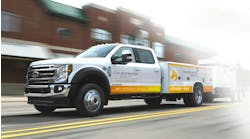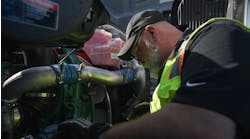Storerooms and storage of spare parts are frequently an afterthought in the design of a repair facility. Little thought often goes into the location, layout, or even the amount of space dedicated to parts. Other considerations, including wanting the building to come in under a budget, rule the decisions.
The fact is that a poorly designed and laid out storeroom will cost money every day, every year in perpetuity, not only cash but extra labor too.
Shops would do well to review their current storeroom layout. There are steps fleets can take to clean up, organize, and optimize what is on parts room shelves.
Initial assessment
First off, take a walk on the wild side and visit your parts storage areas with your eyes open.
There are 10 steps that can help a shop evaluate its current parts storeroom, which would only take an hour or two. These steps include:
- Walk around and do a short assessment of housekeeping. Ensure the floor is clean and swept, and there are no empty boxes or packing materials left around. Are trash cans overflowing? Are there any safety issues that stand out?
- Look closely at a number of bins in the storeroom. Take note of the following:
- Do any bins have more than one part?
- Randomly sample four or five bins. Compare count to inventory record.
- Write down any empty bins. For those empty bins:
- Confirm if any empty bins are showing a positive quality on-hand (QOH) in the parts inventory system.
- Additionally, check to see if parts for those bins are on reorder, and if those parts are to be delivered soon.
- Make note of the number of stock outs per month, especially the number of essential parts causing downtime.
- Use work sampling, or something more informal, to randomly sample waiting time at the parts window. Report the average and the standard deviation.
- How many parts have not moved at all in the last year? Of these parts, which ones are not on the critical or insurance policy parts lists?
- Are the basic numbers of the warehouse known? Examples include value of stock (by category), number of SKUs, turnover, accuracy, etc.
- Choose a couple of spare parts to ask the questions:
- Is the piece starting to deteriorate, or is the collected dust thick (showing it has been there a while)?
- Find an empty bin. Inspect the order date of the part, or if there is no order, find out why.
- Do you have an area for storing overnight air or courier shipments? Check the dates the shipment(s) arrived and figure out how long it has been sitting there.
- Is there an area for rebuildable parts? Is it marked? Can you quickly tell the difference between outgoing and returned rebuilt parts?
- Finally, talk to a few people, such as the planner or other maintenance personnel, and ask them their opinions about parts and inventory.
After completing an initial parts room assessment, start a project to clean the area where parts are stored.
Next month we will review what to look for and how to optimize the parts stock room.
Joel Levitt is the president of Springfield Resources, a management consulting firm that services a variety of clients on a wide range of maintenance issues. Levitt has trained more than 17,000 maintenance leaders from more than 3,000 organizations in 38 countries. He is also the creator of Laser-Focused Training, a flexible training program that provides specific, targeted training on your schedule, online to one to 250 people in maintenance management, asset management, and reliability.




